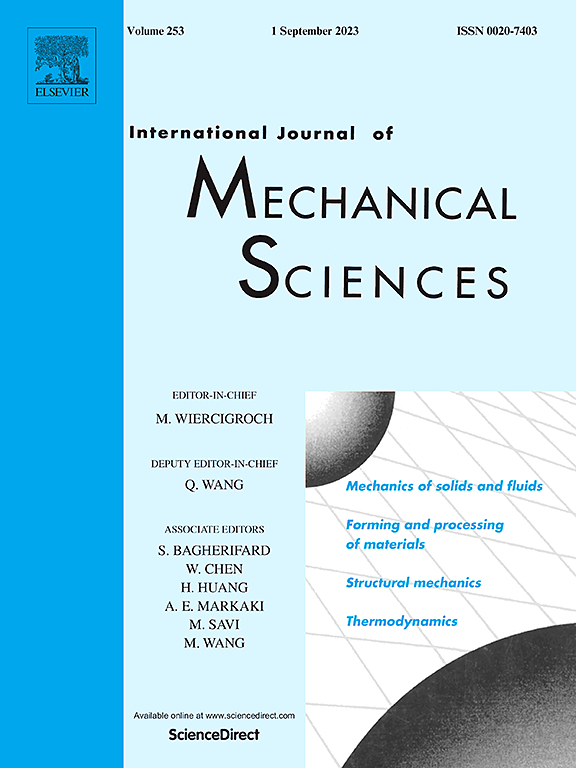Experimental and numerical study of CFRP laminates after seawater immersion
IF 7.1
1区 工程技术
Q1 ENGINEERING, MECHANICAL
International Journal of Mechanical Sciences
Pub Date : 2025-02-01
DOI:10.1016/j.ijmecsci.2025.109975
引用次数: 0
Abstract
In this paper, the residual strength of carbon fiber reinforced polymer composites (CFRP) for marine applications has been studied. The seawater absorption tests, regular tensile tests, scanning electron microscope (SEM) and energy dispersive spectroscopy (EDS) analysis of CFRP exposed to seawater at 25 °C, 40 °C and 60 °C respectively were conducted. A hydro-mechanical coupling progressive damage model has also been established to predict the mechanical behavior and damage evolution, considering both hydrothermal- and mechanical load-induced damage. The experimental results show that the seawater immersion significantly affects the transverse mechanical properties, while having little effect on the in-plane shear and longitudinal properties. The microstructural comparative analysis indicates that the accelerated moisture absorption, induced by high immersion temperature, increases salt deposition and weakens the adhesion between fiber and matrix. The finite element analysis (FEA) results shows good fidelity, with relative errors not exceeding ±10 % in predicting residual strength. Seawater immersion significantly accelerates matrix tensile damage, increasing its area, but has minimal effect on fiber tensile damage. This model can assist engineers in predicting the durability of composite load-bearing structures in marine environment.

求助全文
约1分钟内获得全文
求助全文
来源期刊

International Journal of Mechanical Sciences
工程技术-工程:机械
CiteScore
12.80
自引率
17.80%
发文量
769
审稿时长
19 days
期刊介绍:
The International Journal of Mechanical Sciences (IJMS) serves as a global platform for the publication and dissemination of original research that contributes to a deeper scientific understanding of the fundamental disciplines within mechanical, civil, and material engineering.
The primary focus of IJMS is to showcase innovative and ground-breaking work that utilizes analytical and computational modeling techniques, such as Finite Element Method (FEM), Boundary Element Method (BEM), and mesh-free methods, among others. These modeling methods are applied to diverse fields including rigid-body mechanics (e.g., dynamics, vibration, stability), structural mechanics, metal forming, advanced materials (e.g., metals, composites, cellular, smart) behavior and applications, impact mechanics, strain localization, and other nonlinear effects (e.g., large deflections, plasticity, fracture).
Additionally, IJMS covers the realms of fluid mechanics (both external and internal flows), tribology, thermodynamics, and materials processing. These subjects collectively form the core of the journal's content.
In summary, IJMS provides a prestigious platform for researchers to present their original contributions, shedding light on analytical and computational modeling methods in various areas of mechanical engineering, as well as exploring the behavior and application of advanced materials, fluid mechanics, thermodynamics, and materials processing.
 求助内容:
求助内容: 应助结果提醒方式:
应助结果提醒方式:


